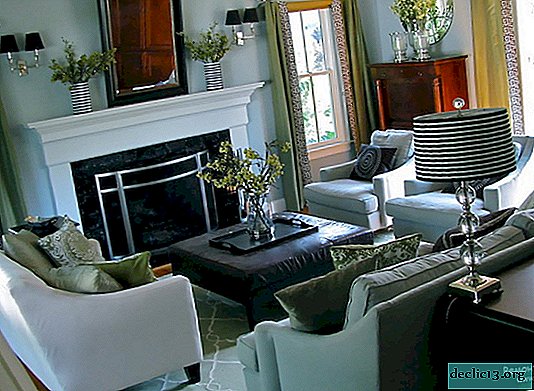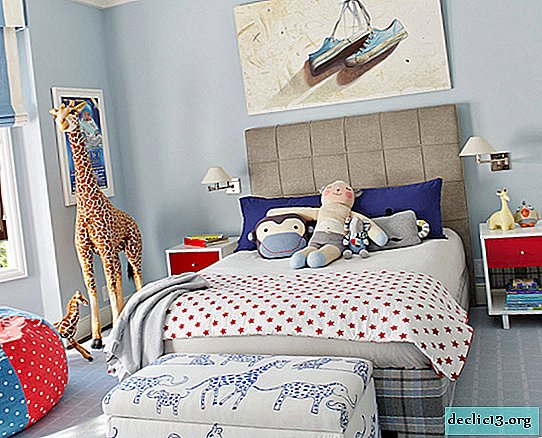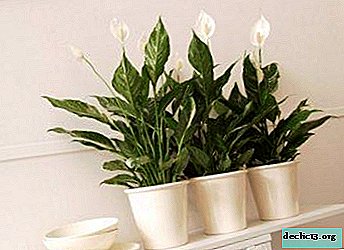Greek style in the interior
The remarkable history of Greece, especially Ancient, its cultural wealth, expressed in art, architecture, to this day does not leave indifferent millions of its fans. The Greek style in architecture, interior design for many has become an object to follow. Since the main feature of the Greek style is the absence of any elements of luxury, the simplicity of decoration, which has an almost ascetic appearance, it is quite natural that the admirers of this style are practical and economical people, but at the same time, who love comfort. The Greek style perfectly combines elements of antiquity and modernity. It is characterized by cold colors, the presence of ceramic tiles and marble.
Greek style history
The history of any culture is inextricably linked with the stages of development of its state, and often the neighboring one. It is believed that the Greek style originated in the period VIII-VI century BC.
The history of the development of the Greek style has several periods. For the early periods of the history of development, the style is characterized by a mythological orientation, in which the main place was given to the ancient mythological gods, which symbolized the power and prosperity of the Greek Empire. At the earliest stage (VIII-VI century BC), the formation of basic principles took place. In the period from the VI century to 470 BC began a gradual change in the principles and elements introduced from Egypt, Asia, in accordance with the religious outlook of the people of Greece, its spirit, form. In the period from the V century to 338 BC in the Greek style, dramatic changes are taking place. The style becomes more noble, harmonious. Elements of luxury appeared in materials, forms, and decorations. For the next period (IV century - 180 BC) the history of the Greek style is characterized by the influence of the East. Buildings are created more magnificent and spectacular. In the last period, after Greece came under the power of the Roman Empire, the Greek style merges with Roman art. But still, he retained his main features - simplicity and practicality, while the Roman style was inherent in luxury and pomp.

The Greek style is characterized by:
- high ceilings
- stucco columns
- meander patterns
- murals
- colors from natural shades, the absence of bright colors, a minimum of gilding
- granite, ceramic tile, marble
- furniture - simple in shape, made of natural wood, handmade, leather upholstery, velvet excluded
- vertical orientation of all interior details
- textured wall plaster, wallpaper excluded
- decor items - vases, amphorae, figurines, sculptures
- minimal use of fabrics on windows
Before realizing your dream, an apartment in the Greek style, be sure to make sure your apartment is suitable for its design in this style. Otherwise, no matter what is done, the apartment will not correspond to the classical idea of the Greek style.
Greek style ceilings
The ceilings should be high, give those in the room a feeling of freedom, space, and attract a look up. To emphasize the greatness of everything in the room, the ceiling is supported by monumental columns with stucco molding.

Sometimes meander patterns overlap on the ceiling

Often the ceiling is framed by skirting boards made of stucco moldings.

If possible, a window in the form of a square is mounted in the ceiling, which improves the illumination of the room

The heart of the ceiling is usually a massive chandelier hanging on gilded chains, and small lamps located along the perimeter of the ceiling will favorably highlight the ceiling plinth.

The ceiling is finished with textured plaster. The tone of its color should be in harmony with the color of the walls. But most often the color of the ceiling and walls is the same.

Greek style does not exclude different levels of ceilings, which allows you to get out of a difficult situation with different ceiling heights in the room.

Greek style walls
Walls require a special approach, as far from everything is suitable for decorating them. Only textured plaster is used, which gives asceticism and simplicity to the room.

Occasionally, panels made of wood or some other facing material (ceramic tiles, stone "plastushki", etc.) are used.

Greek style allows for niches in the walls, which are carried out using drywall. This is often done to the detriment of the area of the room.

Sometimes, the owner’s desire to install the columns cannot be realized due to the small area. In this case, the Greek style allows you to solve this problem by installing polyurethane pilasters.

Greek style color
Only natural colors are used - lemon yellow, white, all kinds of shades of blue and green.

Greek style floor
The Greek style does not establish clear rules for the design of the floor. But carpets are not welcome. The classic floor is laid out with marble, mosaic tiles in the form of meander patterns,

But it does not exclude other types of coverage.

A combination of different coatings is allowed, which does not in the least reduce the beauty and originality of the floor design

Greek style furniture
Greek-style furniture is characteristic:
- simple but solid upholstery of chairs and sofas. Leather, velvet not applicable
- the legs of chairs and tables are curved to the outside.
- made of natural wood.

Greek style accessories
Room interior accessories are usually represented by ceramic, marble amphora, jugs, figurines of ancient heroes,

mythical animals

ornamented wall lights.

Cloths on windows are rarely used. It is mainly found in dormitory rooms in the form of natural cotton and linen. Flower vases are very rare in Greek style. Ceramic dishes are present in abundance.
We wish everyone who likes simplicity and asceticism, in a harmonious combination with the past, the antique beauty of the Greek style, to make their dream a reality, the benefit is that it is not so difficult and that means - it is possible.

















